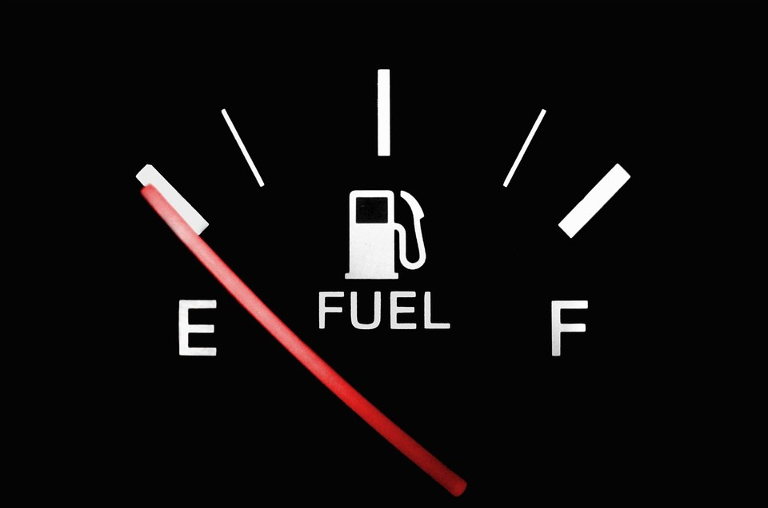 Empty
Empty
By Suzanne Weyn
183 pp., hardcover. Scholastic Press – Oct. 2010. $17.99. Ages 12 to 14.
Aimed at readers aged 12 to 14, this novel successfully blends high school drama and adventure with an important message about the world oil crisis. It was published in 2010, following a period of mounting public concern over runaway energy costs. The book’s author, Suzanne Weyn, saw it as a means of raising awareness about the issues at the root of these rising energy prices through a fictional narrative set 10 years in the future. While the novel has become quite dated in some respects, its core takeaway—that oil is finite and we’re unprepared for its decline—remains as relevant now as it was eight years ago.
As the story opens, it’s summertime in the small town of Sage Valley, New York. Our main characters are a motley group of teenagers on break from high school. In addition to being preoccupied with typical high school concerns such as dating and the angst that attends the start of one’s senior year, these teens are also, like everyone else in their community, coping with the consequences of ever scarcer and costlier oil. In the world of this book, Americans have seen gasoline soar to $20 per gallon and oil reach into the several hundreds of dollars a barrel range. Consequently, long-distance travel has become prohibitively expensive, countless consumer products have disappeared because they’re no longer economical to ship, indoor climate control is far from commonplace and public hygiene standards have fallen as a result of hot showers becoming more and more of a luxury.
As if these hardships weren’t enough, we soon learn that the United States is about to go to war with Venezuela. U.S. troops are being dispatched to the oil-producing nation to prevent it from delivering on a threat to raise its oil price to $800 a barrel. But the move backfires, leading to a repeat of the 1970s fuel shortages. “Out of Gas” signs spring up at service stations across the land, and those stations fortunate enough to have gas become scenes of vicious fighting among would-be patrons who are stuck waiting in line for hours.
The situation deteriorates still further when there is a report of two massive hurricanes barreling toward the eastern United States, which are threatening to merge into a single super hurricane. When this monster hits Sage Valley, it plunges the town into a Hurricane Katrina level scene of destruction and human suffering. As the community comes together in the aftermath, Empty becomes a tale of pluck, heroism and personal transformation. Weyn also uses the disaster scenario as an opportunity to present some salient facts about climate change, including how higher sea-surface temperatures give rise to ever more extreme weather events.
Through their actions, the characters give us a guided tour of potential responses to humanity’s crises. We learn, among other things, about building rainwater harvesting systems, implementing non-fossil fuel-based transport schemes, keeping food cool with root cellars, powering homes with wind turbines and combating the GMO seed racket through the use of organic farming practices.
Perhaps my favorite scene is one in which our main character accompanies her friend on a sailboat trip to deliver food and supplies to stranded flood victims. They’re entering treacherous waters as they approach the Hudson River, but the guy at the helm knows what he’s doing. I like this part because it’s educational in addition to being entertaining. As our sailor character walks his assistant through the steps involved in crewing the craft, he simultaneously teaches us a bit about sailing terminology and sail handling.
This book’s main flaw—and it’s a significant one—is that it misleads readers on a key point regarding our energy predicament. Weyn repeatedly makes it seem as if the world’s petroleum is about to run out completely, when in fact what’s happening is that it’s the economical, easy-to-extract oil that’s going away. As those familiar with the science and economics of oil production are aware, no oil-producing region ever runs totally dry, because the amount that is profitable or even possible to recover is only a fraction of what exists in total. Thus, when one character states that Saudi Arabia “overreported its oil production for years until its supply of oil was completely gone,” he’s describing a nonsense scenario.
What’s more, the author later contradicts her own oversimplification when she summarizes the legacy of the late geoscientist M. King Hubbert. In her synopsis of Hubbert’s peak oil theory, Weyn correctly explains that it’s about declines in the rate of production, not utter exhaustion. So why does she fail to make this distinction elsewhere in the book? After all, we’re talking about the second-most crucial concept to understand about oil depletion (the first being that oil is finite). It may be that she deemed this level of nuance to be too much for middle school-aged readers; but that doesn’t make sense, given the substantial amount of other, equally high-level science in the novel. Thus, I’m puzzled by the inconsistency.
However, it is to Weyn’s credit that she refuses to soft-pedal the dilemma we face with respect to alternative fuels. It’s well known among those who follow peak oil research that oil’s supposed replacements are inadequate because they’re far less energy-dense and more difficult to scale up than oil is. Worse still, their continued existence, to say nothing of their future expansion, depends wholly on our existing oil-based infrastructure. Sage Valley’s resident energy expert sums up this plight beautifully for one of his pupils: “We’re trying to gear up nuclear and wind-power facilities—but, ironically, it’s hard to build them without oil.”
I stated earlier that certain aspects of Empty seem dated now. These have mostly to do with the book’s rather extreme take on what the oil picture might resemble around 2020. From where we now sit, it seems unlikely that two years from now gasoline will cost $20 per gallon and oil $800 per barrel. But back in 2010, these seemed like real possibilities to many who grasped the direness of the situation. As it turns out, though, history decided to take a different course, thanks to a serendipitous, if transitory, flood of U.S. tight oil from the nation’s shale oil patch. Yet our reckoning with oil depletion will come eventually, and when it does, a new generation of young readers will be ready to absorb this novel’s message.






